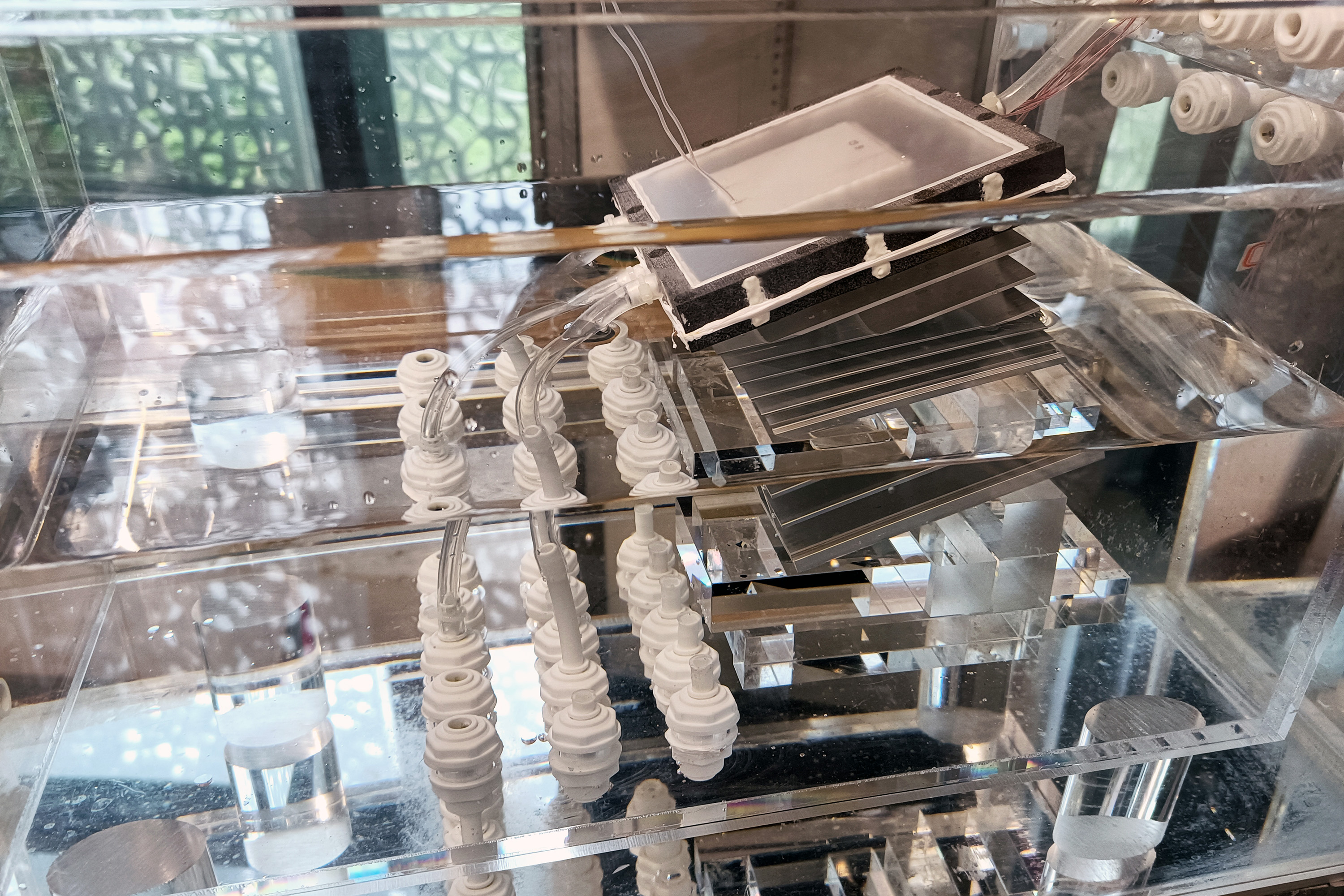- Arvind's Newsletter
- Posts
- Arvind's Newsletter
Arvind's Newsletter
Issue No #852
1.Reliance Jio continues to dominate rural India as the only telecom operator to gain mobile users in July, while Bharti Airtel and Vodafone Idea lost customers reported the Economic Times.
“Jio's strong (rural) momentum is likely driven by low cost JioBharat phone subscribers, especially post Bharti's recent hikes in the minimum recharge plans and Jio's launch of the new phone,” UBS said in a note. Bharti needs to vary of Jio’s strategy which at the moment is adding subscribers but not much revenue per subscriber. It can not afford to give Jio a free run of this market but if does compete it will dilute is overall ARPU- that is the dilemma.
This is a classical disruptive innovator strategy of targeting an under-addressed market with a low cost product and gradually upgrading the quality of product as well as customer revenues by creating a barrier from entry for competition by scale of operations. Jio’s strategy is not without challenges as explained in the next article but if it succeeds there could be a big pay-off. Let us see if it works.
Read more at:
The Economist has delved more into the intent of Jio’s strategy in its piece-Digital Jio-graphy: a $12 phone get 300m illiterate Indians online? India’s biggest mobile network is aiming to bridge an America-sized gap in internet access.
When Mukesh Ambani, India’s richest man, launched a mobile network in 2016, he offered subscribers free data for the first few months. Tens of millions flocked to the network, named Jio, sparking a fierce price war and expanding India’s online population. But keeping those customers once the offer lapsed required a different strategy. Mr Ambani realised that people want to keep in touch with friends and family and be entertained. So Jio phones came bundled with services such as social networks and chat apps as well as music, film and sport streaming. The plan worked: Jio is today India’s dominant network, with more than half the country’s 825m mobile-data subscribers. Indians’ data consumption has exploded.
Yet there are another 322m—about the population of America—voice-only mobile subscribers, most of whom use other networks. The persistence of this multitude is worrying for the government, which is pushing “digital India” as a way to improve access to public services and boost economic growth. It also represents a business opportunity for Jio, whose share of the overall mobile subscriber base of 1.15 bn is an improvable 38%. The company boasts that it will free India from the tyranny of 2G, as the old generation of voice-only networks is known.
In July Jio launched a device designed to entice this voice-only cohort to get online. Priced at just 999 rupees ($12), “Jio Bharat” phones resemble pre-smartphone handsets, with a keypad and small screen. They come bundled with apps to watch movies and sport, stream music and make digital transactions using India’s widespread Unified Payments Interface (UPI) system. Jio is targeting those who “remain ‘trapped’ in the 2G era, unable to tap into basic features of the internet”, said Akash Ambani, Jio’s chairman (and Mukesh’s son). Subscriptions cost 123 rupees a month for unlimited calls and 14GB of data. To ensure that the devices and plans reach the intended customers, Jio started by selling them in relatively remote areas before expanding availability nationwide.
The strategy draws on the success of 2016, with one big difference: the new devices come without Facebook and Whatsapp pre-installed or any way to install them. The social-network and messaging apps are generally considered essential to appeal to Indians, who outnumber all other nationalities on both services. It is, at first glance, an odd omission. Yet it reflects the diversity of Indian society and the difficulty of reaching into its deepest corners.
“There is a large population, equal to some countries, who don’t know what to do with a smartphone,” notes Navkendar Singh, an analyst with IDC, a market researcher. One in four Indians above the age of 15 are illiterate. Text-based social networks and chat apps are useless to them. Yet they know how to use basic phones to make voice calls, are as keen on entertainment as any Indian—and getting access to UPI is a major attraction for everyone looking to upgrade their phones.
The high cost of a smartphone has kept access out of reach to poor users. Jio is betting the digital-payments option on its ultra-cheap device, even more than the entertainment options, will coax them to sign up. The tiny screen may prove unsatisfying for consuming content, says Shilpi Jain of Counterpoint, another market-research firm, “but everyone needs UPI”.
The government is especially keen on bringing the last few hundred million holdouts into the digital ecosystem, which it increasingly uses to deliver public services, especially to the neediest. India’s central bank recently said Indians would soon be able to make UPI payments using voice commands, and that it was working on ways to enable payments without internet access, with communication technology used by contactless cards. Jio’s phone, too, offers voice assistance.
UPI, like Jio, was launched in 2016. Both are integral to India’s digital transformation. Yet India’s rural poor have largely missed out on the country’s technological progress. That may be about to change.
2.World Bank sees India GDP growth for FY24 at 6.3% as economy shows resilience amid challenging environment
The World Bank also projected that India's service sector activity will remain strong with growth at 7.4%, and added that investment growth will remain robust at 8.9% in the current fiscal year.
"...despite significant global challenges, India was one of the fastest-growing major economies in FY 2022-23 at 7.2%. India’s growth rate was the second highest among G20 countries and almost twice the average for emerging market economies".
Meanwhile, MoneyControl’s Economic Tracker showed an overall positive though mixed trend in various indicators for the economy, Its report headlined as follows-”Core sectors do well, auto sales a mixed bag.”Active workforce in the economy improved during the week, but consumer sentiment dipped despite uptake in urban areas due steeper decline in rural sentiment . Power consumption declined. Monthly data shows a minor uptick in air traffic. While car sales improved, two-sales declined.
3.The European Union is considering placing additional protections on sensitive technologies — including semiconductors, artificial intelligence, quantum computing, and biotech — to ward off threats from rivals, Politico reported. European nations will decide whether to pour funding into the four “most sensitive and immediate” areas to bolster regional capacity, or restrict tech sharing with countries considered a threat. Though it does not explicitly say so, the draft document is clearly aimed at China, which one European official described as “like EU’s Voldemort.”
Beijing was already seeking to strengthen its tech capacity in response to heavy U.S. sanctions: Huawei wants to build a network of chip plants, apparently with the aid of several Taiwanese companies, according to Bloomberg.
4.Desalination system could produce freshwater that is cheaper than tap water, reports MIT News.
MIT engineers and collaborators developed a solar-powered device that avoids salt-clogging issues of other designs.
Engineers at MIT and in China are aiming to turn seawater into drinking water with a completely passive device that is inspired by the ocean, and powered by the sun.
In a paper appearing today in the journal Joule, the team outlines the design for a new solar desalination system that takes in saltwater and heats it with natural sunlight.
The configuration of the device allows water to circulate in swirling eddies, in a manner similar to the much larger “thermohaline” circulation of the ocean. This circulation, combined with the sun’s heat, drives water to evaporate, leaving salt behind. The resulting water vapour can then be condensed and collected as pure, drinkable water. In the meantime, the leftover salt continues to circulate through and out of the device, rather than accumulating and clogging the system.
The new system has a higher water-production rate and a higher salt-rejection rate than all other passive solar desalination concepts currently being tested.
The researchers estimate that if the system is scaled up to the size of a small suitcase, it could produce about 4 to 6 liters of drinking water per hour and last several years before requiring replacement parts. At this scale and performance, the system could produce drinking water at a rate and price that is cheaper than tap water.
5.India tells Canada to withdraw dozens of diplomatic staff, reports the Financial Times.
India has told Canada to withdraw dozens of diplomats from the country, in an escalation of the crisis that erupted when Prime Minister Justin Trudeau said New Delhi may have been linked to the murder of a Canadian Sikh. Ottawa has been told by New Delhi that it must repatriate roughly 40 diplomats by October 10, according to people familiar with the demand.
One person said India had threatened to revoke the diplomatic immunity of diplomats who remain after that date. The Canadian foreign ministry and the Indian government declined to comment. New Delhi has previously said it wanted “parity” in the number and grade of diplomats each nation posts to the other.
One person said Canada had 62 diplomats in India and that New Delhi had told them to reduce that by 41 people.
New Delhi already announced a visa ban for Canadians the day after Trudeau made his bombshell claim on September 18. The latest move threatens to significantly intensify the crisis that broke when Trudeau said Ottawa was investigating “credible allegations” that Indian agents may be behind the assassination of Hardeep Singh Nijjar, a Sikh separatist and Canadian citizen, who was killed in a Vancouver suburb in June.
It will also complicate matters for Trudeau, who faces pressure at home to act while also trying to secure support from western allies who are eager to foster relations with New Delhi to serve as a bulwark to China.
India’s foreign minister S Jaishankar said in Washington last week that the alleged assassination was “not consistent with our policy” and accused Canada of indulging Sikh separatists agitating for an independent state in India.
The stand-off with India is a problem for Trudeau, whose popularity is waning during a cost of living crisis while his Liberal party gears up for elections due before October 2025. Critics have charged Trudeau with pandering to Canada’s sizeable Sikh population and acting rashly.
David Cohen, US ambassador to Ottawa, has also said Canada received intelligence on the murder from the Five Eyes intelligence-sharing network, which also includes the US, UK, Australia and New Zealand — a statement that will bolster Trudeau’s case.
“India knows our capacity to retaliate is limited, that we have a minority government, and is aware of the consequent politics at play,” said Peter Boehm, chair of the Canadian Senate committee on foreign affairs and international trade.“And, of course, India has an election on the horizon.”
In a later report today in Reuters, it has quoted Trudeau, “Canada is not looking to escalate the situation with India. Will continue to engage responsibly and constructively with New Delhi. We want to be on the ground in India to help Canadian families there," Reuters quoted Trudeau as saying.
Trudeau however declined to confirm the expulsion reports while addressing the media on Tuesday.


